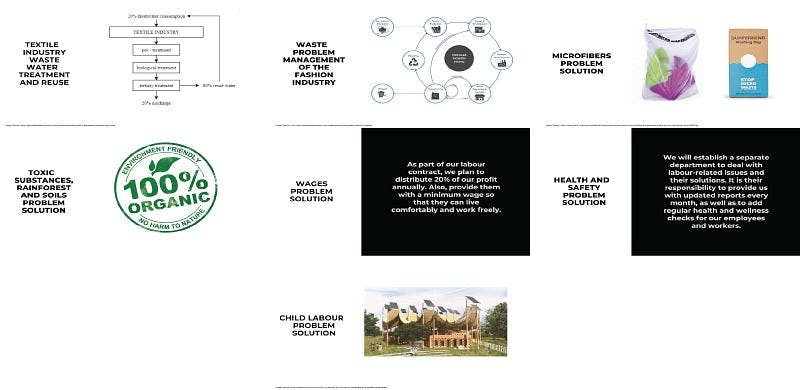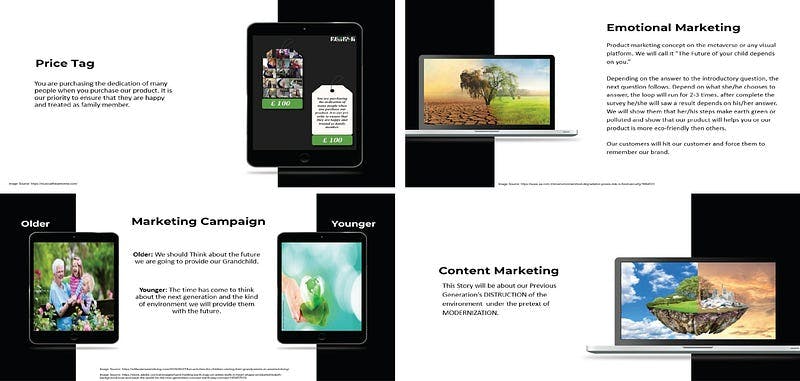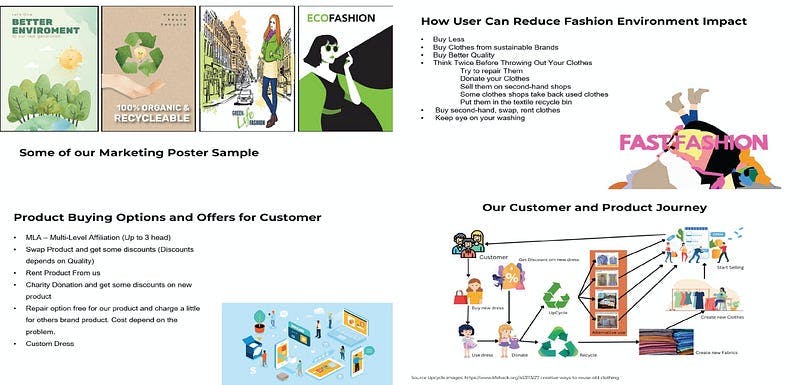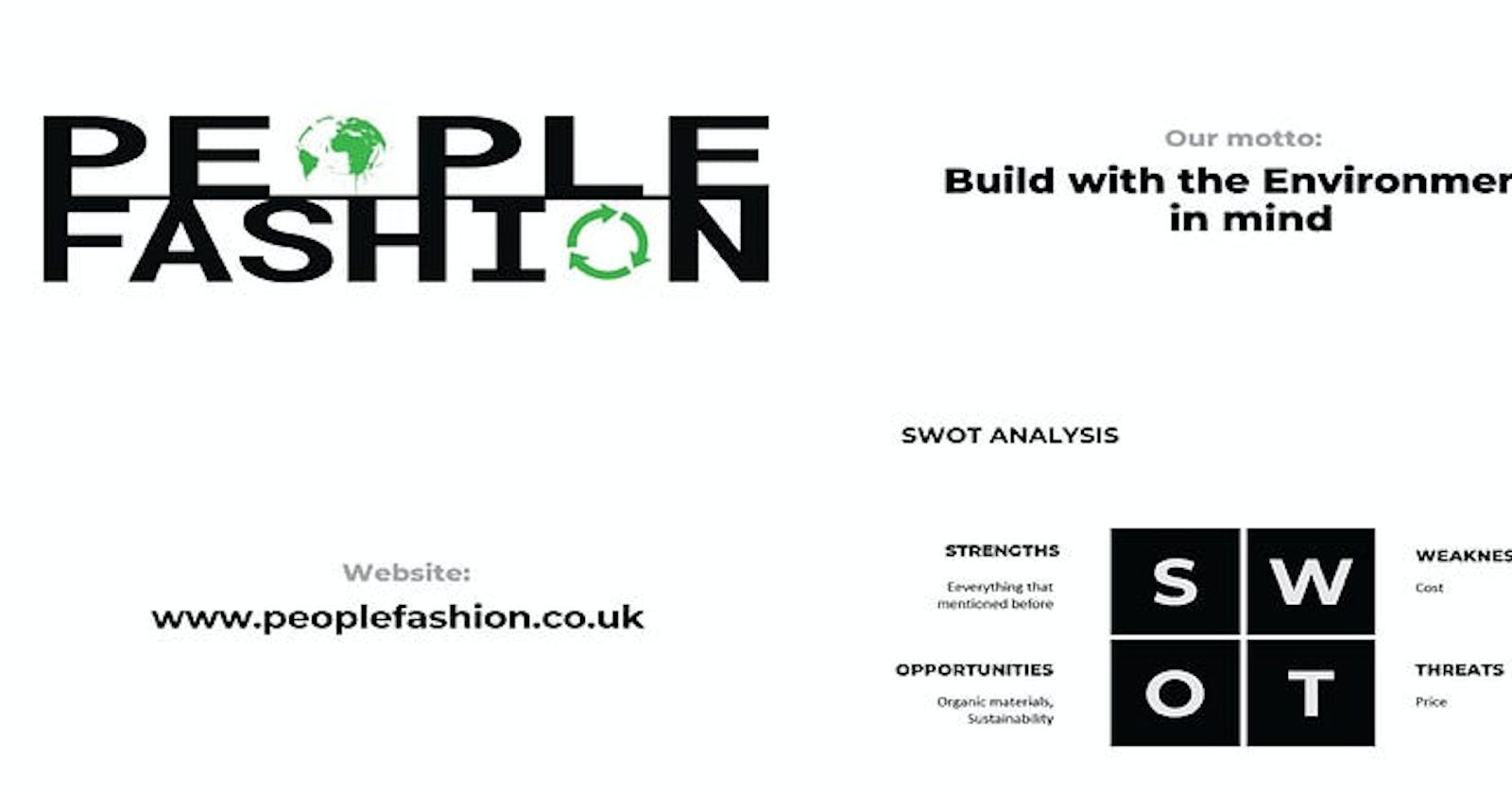The Fashion Industry as I have experienced it after Completing Materials, Models, Mindsets Project
Before I started my BSc course, I had no knowledge of the fashion industry. Supply chains, pollution from industry, fast fashion, and labour conditions are a few examples. Also, I was not aware that the Rana Plaza incident (2013) is recognized as an unacceptable incident throughout the world, as was the fire at the Tazreen Fashions store in Bangladesh the same year.
Business name and Logo were the most challenging part for me because I am looking for something that will represent the people and Recycle. But I didn’t find any my teammate helped me by suggesting some names but those are not perfect. I didn’t know why but I search on google “People Fashion” and I saw that there isn’t any business by this name that is why I chose this name but after that, I didn’t find “ peoplefashion.com” but then realised that I am planning about a UK base business so I can use “.co. Uk” Extention and I chose “ peoplefashion.co.uk”. Then I start analysing SWOT. I found lots of positive things and Negative things. but those can be solved the main weakness and threats are Cost and product price. I didn’t have any plan for the motto but suddenly the motto has come to my mind so I added it.

I don’t have any idea about this Fashion part. My teammates design those things and find those fabrics that are recyclable and 100% natural.

When I try to find Fashion Industry related problems and Pollution. In the starting, I didn’t find anything but after I start reading articles and books that moment I realised how I can find those problems then I start searching for id and suddenly I found a website called “ sustainyourstyle.org”. From that website, I got lots of information about Fashion Industry related Pollution. At that moment I read two books called “Sustainable Fashion by Wearme Fashion” and “ A Practical Guide to Sustainable Fashion by Alison Gwilt” those two books helped me a lot to understand the fashion industry.

After finding those problems now I had to find solutions. Because if I have to start a sustainable business then I have to solve those problems otherwise I can not start a sustainable business. For this reason, I start finding those solutions but I didn’t find any solutions. I find all those problems from a single website which was why I thought I could find those problems solutions in a single website. But that was my biggest mistake. When I realised that I was going in the wrong direction, so I tried to find this problem solution that I can I find solutions. So I divided those problems into separate parts and start finding solutions. then I find a good solution for water pollution in a Case Study about Textile Industry Wastewater treatment and reuse on the sigmadafclarifiers.com website. For the Waste problem solution, I did lots of research and finally found the CIRCULAR model that will be the perfect solution. When I started to find the solution to the Microplastics and Microfiber problem, I found a product on amazon called “ Guppyfriend laundry bag” they claim that this bag can save us from microplastics. but I was confused about this bag then I started to find information and I found an article called “ How to stop plastics from your clothes polluting the planet each time you do your laundry” on “which.co.uk”. after reading this I realised that the bag can save us from microplastics.

From the beginning, of the project, I had some concepts about my marketing concept but I was a little bit confused that how I can use this concept. But when I try to find something at that moment I realised that I always talked about the environment and related problems. Then I started to think about the combination of the environment and young and old people. because I want to target both young and old audiences. Then finally I found my marketing concept, talking about the future of the world and what type of future we are going to give our next generation.
For the price tag, I got the concept from the #WhoMadeMyClothes campaign, I just try to answer all of my customer’s “Who made your Cloth” so I was planning to use some images of those people who are directly involved with those cloth creations.

I didn’t face any problems with posters, selling options and customer journeys because from the beginning I know the customer journey. and I create a business poster and selling option at the end of my research so that moment I have lots of information in my mind which is why I didn’t face any problems with those.
In Conclusion, I can say that I learn lots of things about the Fashion industry and also learned about the problem of this industry and its solutions also. Because this is a group project and I was acting like the project manager so it was the perfect time to talk about my mistakes and how I can solve those problems in future. As a Project manager, my first mistake was that I didn’t distribute perfectly because I didn’t know about my team member’s speciality. For the next project, I will try to know about my teammates and then I will distribute the project. The second mistake is that I didn’t fix the deadline for our work steps and didn’t break down the project. After doing this project I realised that if I break down the project and fix the deadline then most of the problems was resolved because I know who is capable of what and distribute the project perfectly also I have some time as backup time. the third lesson I got from this project is that I have to find a suitable project management framework for my project. Not the framework I learn or know about.
Bibliography
- Fashion & Environment — (s.d.) At: https://www.sustainyourstyle.org/en/whats-wrong-with-the-fashion-industry (Accessed 02/12/2022).
- Fashion, W. (2021) Sustainable fashion: responsible consumption, design, fabrics, and materials. Barcelona, Spain: Promopress.
- Gwilt, A. (2018) A practical guide to sustainable fashion. London: Bloomsbury Visual Arts.
- Lane, H. (2022) Circularity In Fashion -. At: https://www.redressdesignaward.com/academy/resources/guide/circularity-in-fashion (Accessed 02/12/2022).
- Teamconcept (2021) Textile Industry Wastewater treatment and reuse. At: https://sigmadafclarifiers.com/en/technical-articles/textile-industry-wastewater-treatment-and-reuse (Accessed 02/12/2022).
- West, A. (2020) How to stop plastics from your clothes polluting the planet each time you do your laundry. At: https://www.which.co.uk/news/article/how-to-stop-plastics-from-your-clothes-polluting-the-planet-each-time-you-do-your-laundry-amjuT8j8R38g (Accessed 02/12/2022).
Originally published at shayaike-1667566634021.hashnode.dev.

